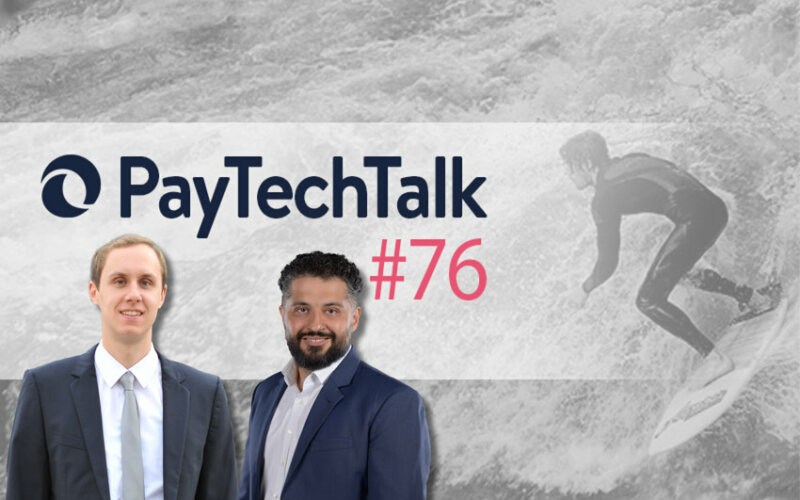Table of Contents
The DLT Pilot Regime is an EU-wide regulatory sandbox for market infrastructures based on Distributed Ledger Technology (DLT). It aims to further support and promote the potential of digital finance in terms of innovation and competition while reducing potential risks. Furthermore, the pilot regime’s testing environment is planned for six years, starting on 23 March 2023, enabling permissioned firms to provide services across the EU.
The EU’s DLT Pilot Regime contains significant opportunities for relevant market participants within a DLT-based market infrastructure. For the first time, the combination of operations, usually performed by either multilateral trading facilities (MTFs) or central securities depositories (CSDs), is possible. Accordingly, the Pilot Regime enables new service offerings from established but also new players. The infrastructural basis, therefore, will be DLT, both for settlement and for the financial instruments to be issued.
DLT Pilot Regime scope to operate the following DLT-based market infrastructures:
- DLT multilateral trading facility (DLT MTF) – operated by an investment firm or market operator
- DLT settlement system (DLT SS) – operated by a central securities depository (CSD)
- DLT trading and settlement system (DLT TSS) – operated by an investment firm, market operator, or CSD
Non-regulated participants that do not operate a traditional market infrastructure can apply for temporary authorization under the DLT Pilot Regime.
Permission to operate the DLT-based market infrastructures
The European Securities and Markets Authority (ESMA) has invited the market participants to respond to a consultation paper on guidelines on standard forms, formats, and templates to apply for permissions to operate DLT market infrastructure. The outcome of the consultation is important for those interested in applying for a permit to operate a DLT market infrastructure since it will provide a standard form which everyone can use to apply. The deadline for response is 9 September 2022. After that we can shortly expect the standard forms.
ESMA states in the consultation paper that it will take the feedback into account when drafting the final guidelines, which it plans to publish before the start of the application for permission (23 March 2023). This corresponds to Art. 8 para. 5 and Art. 9 para. 5 of the DLT Pilot Regime, which has already entered into force.
The most important conditions for applying for specific permission to operate a DLT MTF, a DLT SS or a DLT TSS are provided by Articles 8 to 10 of the DLT Pilot Regime.
According to this, a legal entity can apply for the respective authorization, whereby this must fulfil different requirements depending on the constellation:
- authorized as an investment firm, or authorized to operate a regulated market, under Directive 2014/65/EU (DLT MTF)
- authorized as a CSD under Regulation (EU) No 909/2014 (DLT SS)
- or one of the aforementioned requirements for the DLT TSS
Upon receipt of the application, which must contain the information specified in the relevant norm, the competent authority first checks its completeness within 30 days.
Within 90 days of receipt of the complete application, the competent authority shall decide whether to grant the special permission applied. The granted permission, including, is valid for a period of up to six years throughout the Union, starting from the date of issue.
The DLT Pilot Regime is a so-called “sandbox” regime. A test environment for DLT participants with a number of exemptions from traditional regulatory obligations such as the application for authorization for financial market instruments and ongoing compliance obligations. The special permissions under Art. 8-10 are thus exceptions to traditional complex and lengthy authorization processes.
The application for specific permission under Art. 8, 9 or 10 DLT Pilot Regime shall contain
- the applicant’s business plan, the rules of the DLT MTF/DLT SS/DLT TSS and any legal terms as referred to in Art. 7 (1), as well as
- information regarding the functioning, services and activities of the DLT MTF/DLT SS/DLT TSS (depending on the desired permission) as referred to in Art. 7 (3),
- a description of the functioning of the distributed ledger technology used, as referred to in Article 7 (2),
- a description of the applicant’s overall IT and cyber arrangements as referred to in Article 7 (4), as well as
- evidence that the applicant has in place sufficient prudential safeguards to meet its liabilities and to compensate its clients, as referred to in Art. 7 (6), third subparagraph.
- Where applicable the application shall contain a description of the safekeeping arrangements for clients’ DLT financial instruments as referred to in Art. 7 (5) and a description of the arrangements for ensuring investor protection and a description of the mechanisms for handling client complaints and redress, as referred to in Art. 7 (6), second subparagraph.
- Furthermore, the application shall contain the applicant’s transition strategy, and the exemptions that the applicant is requesting under Art. 4, 5 or 6, depending on the desired permission, the justification for each exemption requested and any compensatory measures proposed and the means by which it intends to comply with the conditions attached to those exemptions.
Once the application is accepted by the authority, the participant must ensure compliance with the above listed safeguards, arrangements, and procedures for up to 6 years.
After the expiration of the permission, or when the aggregate market value of all DLT financial instruments admitted to trading on a DLT market infrastructure or recorded on a DLT market infrastructure has reached EUR 9 billion (Article 3(3)), the operator of the DLT market infrastructure shall activate the transition strategy referred to in Article 7(7).
DLT Pilot Regime scope regarding crypto-assets that qualify as financial instruments within the meaning of MiFID II:
- shares, the issuer of which has a market capitalization, or a tentative market capitalization, of less than EUR 500 million
- bonds, other forms of securitized debt or money market instruments, with an issue size of less than EUR 1 billion, excluding those that embed a derivative or a complex structure
- units in collective investment undertakings with a market value of the assets under management of less than EUR 500 million
Other crypto-assets that do not qualify as financial instruments within the meaning of MiFID II (e.g., e-money tokens, stablecoins, and utility tokens) will be covered by the upcoming EU’s Markets in Crypto-assets Regulation (MiCAR).
Conclusion
The DLT Pilot Regime paves the way for blockchain technology at the EU level for digital securities markets. It is to be welcomed that shares, bonds, and UCITS funds are among the instruments issued on DLT. Market participants can leave the theoretical proof-of-concept level within this sandbox environment and implement DLT use cases in a safe regulatory environment with an EU-wide passport. Authorized operators under the Pilot Regime will benefit from DLT-based efficiency gains due to lower costs and faster settlement but also by providing new service offerings.
Authors
Benjamin Schaub is the Chief Digital Officer at INTAS.tech. His interests include the development and integration of blockchain use cases in the financial industry as well as crypto custody. You can contact him via email (benjamin.schaub@intas.tech) and via LinkedIn (https://www.linkedin.com/in/benjamin-schaub/).
Alireza Siadat is a partner and lawyer at Annerton. He advises banks, crypto exchanges, crypto custodians and crypto securities registrars on permission issues and cooperation topics. Alireza is the go-to expert in setting up crypto-related projects and platforms in Germany. You can contact Alireza via email (asiadat@annerton.com) and via LinkedIn (https://www.linkedin.com/in/alireza-siadat/).
About INTAS.tech
INTAS.tech is a blockchain consultancy founded by the Frankfurt School and Plutoneo Consulting and specifically tailored to financial organizations’ needs. INTAS.tech focuses on the integration and handling of digital assets and the strategic evaluation of blockchain deployment opportunities and their implementation.
About Annerton
Annerton is an independent law firm specialising in regulatory law in the financial industry. Since 2020, Annerton Rechtsanwaltsgesellschaft mbH in Germany and Annerton S.A. in Luxembourg have been advising established international institutions and corporations as well as innovative start-ups from the banking, financial services and digital economy sectors. Annerton is present at four locations in Berlin, Frankfurt am Main, Munich and Luxembourg with currently 21 lawyers, two tax advisors and other team members. Information: www.annerton.com.
DLT Pilot Regime Workshop
Find out more about the consequences & opportunities for your company in a DLT Pilot Regime Workshop by ANNERTON & INTAS.tech! More information: DLT PILOT REGIME WORKSHOP.




